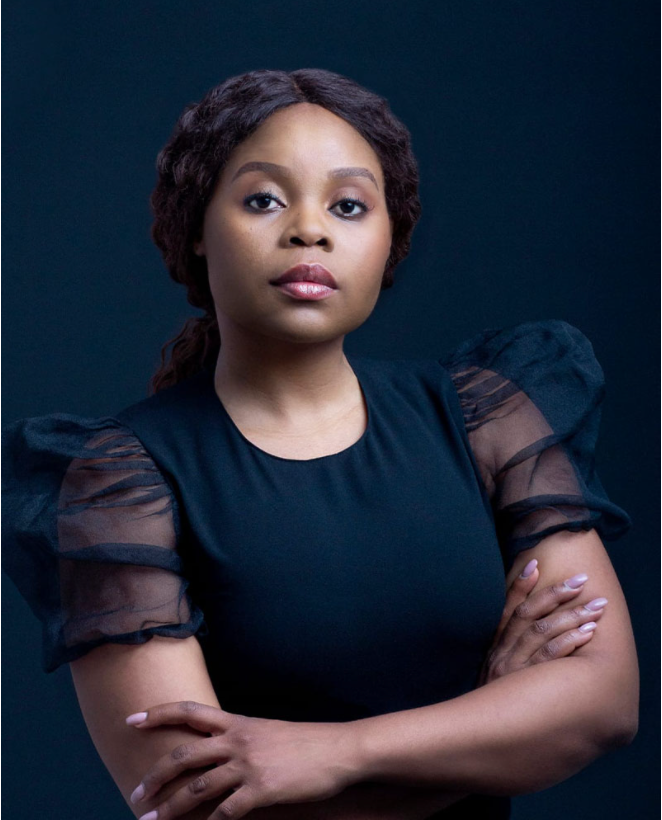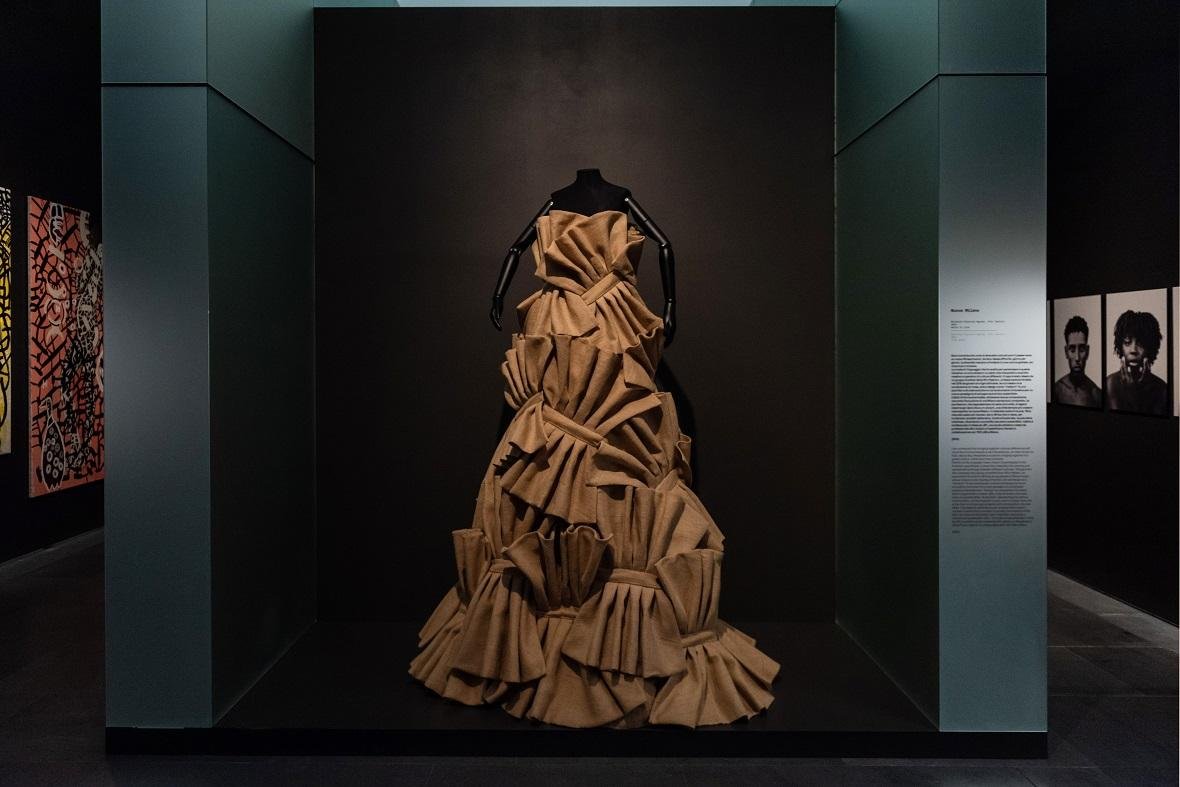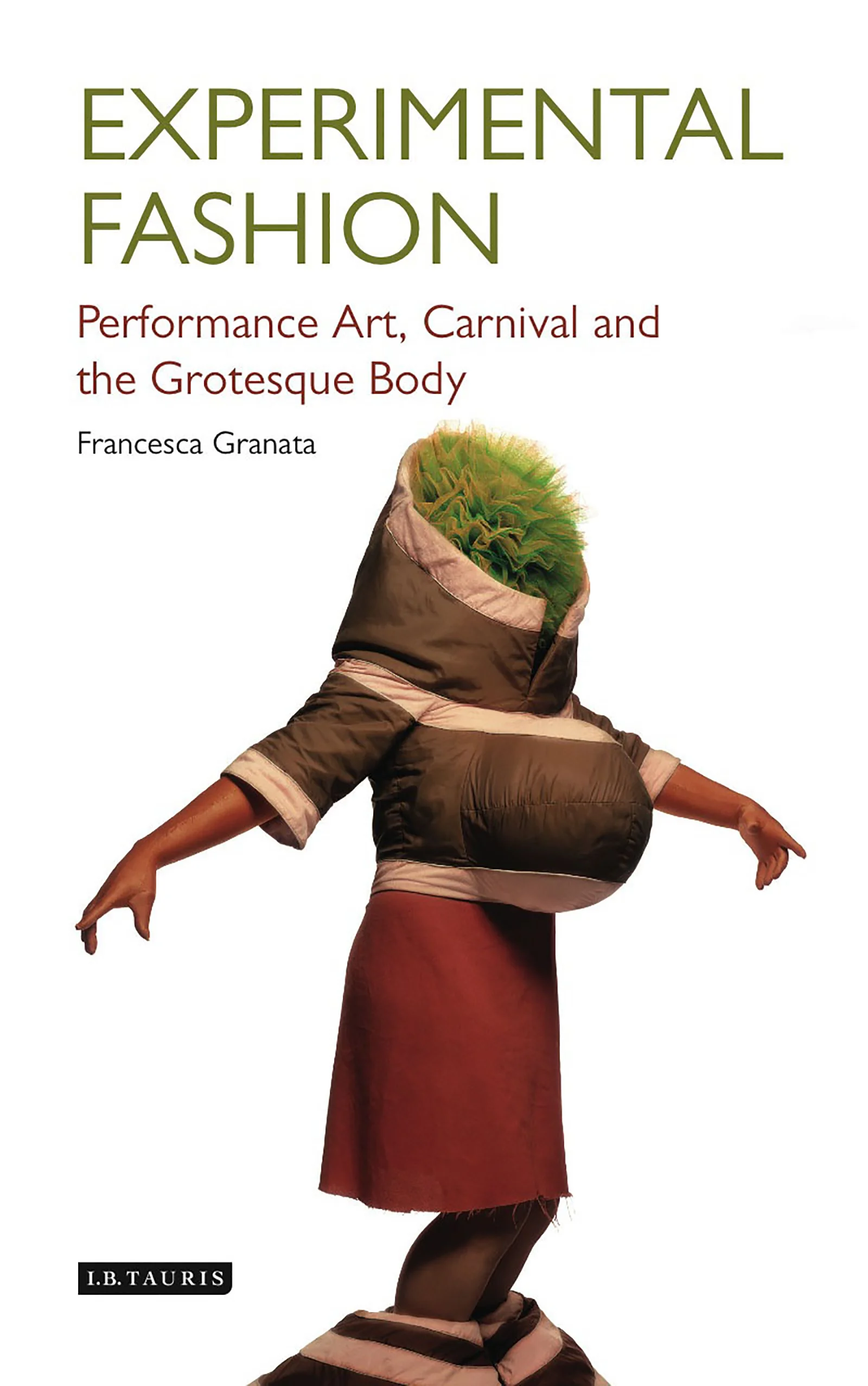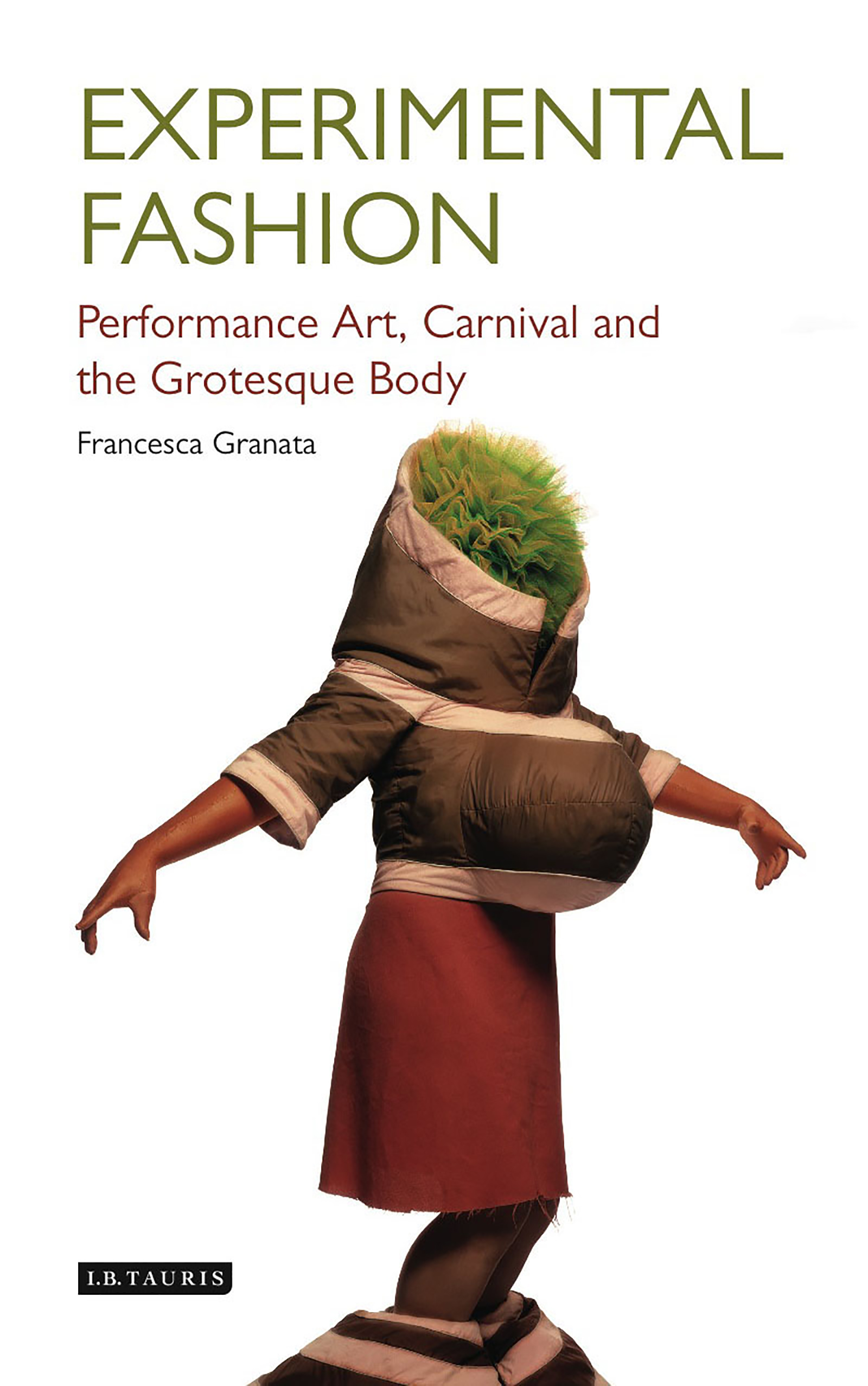Made in Italy–An Expanded View: An Interview with Michelle Ngonmo
/by Francesca Granata
Expanding the narrative of “Made in Italy” is one of the goals that Michelle Ngonmo set for herself when she started the Afro Fashion Association in 2008. Born in Cameroon and raised in the Northern Italian city of Ferrara, Ngomo was the president of the Afro-Italian student association at her university and it is through this work that she started to realize the wealth of talent in fashion among Afro-Italians matched by a bewildering lack of opportunity. With the Afro-Italian association, Ngonmo created a platform to showcase and advocate for Italian designers of African descent. Her project gained greater visibility in the wake of the Black Lives Matter protests in 2020, which led Ngonmo, in collaboration with designers Stella Jean and Edward Buchanan, to take the industry to task and ask for concrete change. From then on, Ngonmo started the “We Are Made Italy” fashion shows highlighting Afro-Italian designers under the auspice of the Camera Nazionale della Moda and has just launched “Unseen Profiles,” a professional platform to aid the industry in hiring Italian BIPOC creatives.
Of course, the concept of African fashion is in and of itself a problematic construct. As Erica de Greef and heeten bhagat have argued, it would be improbable to find commonalities in design produced in as vast a continent as Africa, with its different cultural traditions and climates. However, acknowledging these complexities, Ngonmo uses the umbrella term “Afro” as a method to advocate for designers, almost always Black, who are left out of the narrative of Italian fashion. Advocating for an understanding of Italian society and its fashion as pluricultural, the Afro Fashion Association also contributes to debunking the dangerous myth that Italy has been historically monocultural, white and Catholic—a notion, which has been advanced with particular force by the Nationalist parties in Italy. For instance, Ngonmo’s hometown, Ferrara, provides evidence of both Italy’s long multicultural history and its dangerous Nationalistic side. As recently as the beginning of the twentieth century, Ferrara was home to a thriving Jewish-Italian population, the majority of which either fled or was killed as a result of the 1930 “leggi razziali” racial laws.
Ultimately, Ngomo is helping to rewrite the concept of “Made In Italy,” that ubiquitous national selling point—and in a country where fashion reigns supreme, thus challenges the national narrative. Ngonmo spoke over Zoom from her home in Milan; the interview was conducted in Italian.
Fashion Projects: How did you come up with the idea of the Afro Fashion Association?
Ultimately, Ngomo is helping to rewrite the concept of “Made In Italy,” that ubiquitous national selling point—and in a country where fashion reigns supreme, thus challenges the national narrative. Ngonmo spoke over Zoom from her home in Milan; the interview was conducted in Italian.
Fashion Projects: How did you come up with the idea of the Afro Fashion Association?
Michelle Ngonmo: When I attended university, I was the president of the Italo-African students association at my university [in Ferrara]. Thanks to this position, I was able to organize a number of events which involved people in positions of authority, such as rectors at universities across Italy. This experience allowed me to travel all over Italy and come into contact with a great number of Afro-Italian students and students from Africa, who had studied either design and fashion and yet upon graduation were doing something completely different, very humble jobs such as housekeepers and waitresses. I started asking myself: “How is it possible that out of 100 people I met, there is not one that after their university studies was able to enter this world?” So I started hanging out with them and asking them a lot of questions. I came from a background in communications and journalism, so it was natural for me to start asking questions to understand the reason behind this phenomenon. Eighty-five percent of those I talked to said that they were never even called for a job interview. So I told myself, “Okay, this reality remains invisible, let me try to do something about it. Why not create a platform that can promote this type of creativity which is part of our everyday and of the society we live in?” And that’s how I started. I received a lot of pushback at the beginning. I self-funded it so I started with very little money and from there I started the Afro Fashion Association. I called the association “Afro Fashion” instead of “African Fashion” because I wanted to promote hybridity rather than making people’s origins the focus, because Italian society is hybrid. I started it in 2008.
FP: So it has been a while. How was your association received at the beginning? Has there been a shift in the reception/embrace of your work in the wake of the BLM movement gaining international recognition?
MN: As I mentioned, I encountered a lot of closed doors at the beginning. I tried to contact Italian fashion organizations either via email or in person, but I never received a reply. I am not sure whether it is because they were not interested in the concept or they did not believe that Italian fashion could in fact be multicultural. When in 2020, in response to the Black Lives Matter movement [and the death of George Floyd], all the Italian brands placed the black boxes in their social media accounts, I called Stella Edwards and told her, “You know what? If you look in the Italian fashion landscape, the only member [who is Black] is you.” And she answered, “You are absolutely right, we have to do something about it.” She is in a prominent position, so she could do more, since she could gather the attention of the press, etc…. And it’s something which, I think, requires a lot of courage. Because when you make these choices you could lose buyers and investors. Stella, however, has a lot of courage and force of will, so the two of us, together with Edward Buchanan, wrote a letter and addressed it to the president of La Camera Nazionale della Moda [the association that promotes Italian fashion] asking, “Do Black lives matter in Italian fashion?” Because as I mentioned, all the brands and the Camera della Moda had placed the black squares on their social, but we wanted to say, “Okay that’s great, but here we are having some difficulties. So let’s focus on the homefront and on Italian society.” And from there things started to happen. Stella, like her name suggests, really is a star. So it was thanks to her that at last the lights started to shine on our reality. And so from the question we started with “Do Black lives really matter in Italian fashion?” we ended up with “We are Made in Italy” to say that we are part of Italy, which is not simply an all-white Italy, but it is made of different races/shades. But besides that, we also produce Made in Italy, so the fashion industry should start to consider this more diverse, hybrid side of Made in Italy.
FP: When I read about your project and the name of the fashion shows you organized We Are Made in Italy of course I thought it was in response to the way Italy is often imagined as culturally religiously and racially homogeneous. That is, predominantly Catholic and white, particularly within the right-wing and nationalistic parties. I was wondering whether the situation is changing, and whether fashion can help in this change? Because together with food, fashion is so central to Italian national identity, much more so than in the U.S. Italy imagines itself as a fashion nation. Is that why you chose to work in the fashion field?
MN: There are the three Fs that describe Italy: Food, Fashion and Furniture. At the time I started the association, I didn’t really meet many Italo-African chefs, but in fashion there was so much talent available. And yes, fashion is this incredible means of communication in Italy. It really sets the tone and makes the rules. So choosing fashion to start this process of raising awareness was absolutely a conscious choice.
FP: Do you think the concept of Italian fashion and perhaps Italy more generally is changing? Is it no longer so homogeneous, but rather pluricultural?
MN: I think that small steps are being taken. We cannot expect change to happen in a day or a year. It’s a change that will need its own time, but yes for sure it’s starting. At first there was an instrumentalization of the issue and the way the media covered it. I wrote an article about it recently but I would like to say that fashion is not simply “showcasing,” otherwise designers never enter the market. Our credo is, Great, let’s show that we have this talent, these designers in Italy, but we also have to prepare the industry to include this type of creativity, which is part of the fashion that’s made in Italy. I don’t want to diminish the importance of having these designers included in the official calendar of Milano Fashion Week, and the change that happens from it. From September 2020, when we started the We Are Made in Italy initiative, we have received circa 1,000 curricula of designers who are Afro-descendentas and are based in Italy, who prior to our initiative did not believe they could have a future in Italian fashion. In fact, in the January issue of Vogue [Italia] there is an article with my interview that speaks about this. In response to this reality, we created a platform called “The Unseen Profiles” where we gather for the benefit of the industry CVs of BAME[1] people in Italy. Because very often, when we speak to the industry in Italy regarding the lack of diversity and inclusion, they answer that they don’t have access to resumés from a diverse pool of talent, but in actuality there is a great number of people trained in the field that cannot wait to start working.
FP: Can you tell me a bit more about the We Are Made in Italy fashion show?
MN: The We Are Made in Italy fashion show takes place twice a year (in February and September). We showcase five designers that we select and mentor. We started in September 2020, and the same group that showed in September 2020 also did in February 2021. Then we selected a new group for September 2021 and we are preparing the show for February 2022 with the same group. So we give them a chance to show both the summer and the winter collections.
FP: You used the word “Afro” instead of “African,” as you said, in part not to make reference to an entire continent. Of course, there are a great number of different cultures, traditions, and climates in this enormous continent that is Africa, so it’s hard to speak of an “African” fashion. Why did you use this umbrella term “Afro” instead of saying, for instance, Cameroonian or Nigerian fashion?
MN: To me, the term “Afro” makes reference to a style, whereas Africa is a continent made of 54 countries and I did not have the presumption to represent 54 countries. Often we speak of African fashion, but it’s like saying European fashion. What does it mean exactly? Little to nothing. In European fashion, you have Italian fashion, French fashion, etc, so it’s pretty much the same thing in Africa, even though with Africa we might refer more to geographical areas to indicate similarities. I chose the word “Afro” because I wanted to make reference to the style as opposed to the countries. The style could make reference to colors, prints or certain kinds of cuts (because various regions of Africa have different cuts). So that’s why I chose the word “Afro.”
FP: What are the plans for the future of the “Afro Fashion Association”?
MN: With the association, we are now offering a number of services which reflect the background of our team. We collaborate a lot with universities. We organize Fashion Labs, workshops that can last from ten to thirty hours. We started to develop these initiatives both in Milan and Rome, with the Politecnico of Milan, the Universitá` Cattolica in Rome and its center Modacult and with the Universitá Roma Tor Vergata. Besides that, we coordinate the first department of Fine Arts in Cameroon. And the association is growing little by little. Like I mentioned, we are launching “Unseen Profiles,” the new project of the association—a platform to allow companies to have access to resumes from BAME candidates. It is the first platform of this kind, as previous ones really focused on promoting their talent, whereas this one is focused on professional development to also change the narrative. We have arrived at a moment in which we have to focus on people’s capacities rather than their ability to bring testimony. Many times people ask me to tell them my story. But I believe if we want to change the narrative we should focus on people’s knowledge and skills on what these designers are doing, in the same way we do with white designers in Italy. When other people are interviewed they ask them about their work. I wonder why at times people expect from me the story of the “The Little Match Girl,” as if I came from a migrant boat and should be a source of pity. That’s not my experience. I came from a mom and dad who work as teachers and I should not be written about as someone who instills pity in people. “Oh look she is black, but she is making it.” If we need to change the narrative we have to talk about BAME designers in Italy in the same ways we talk about other designers and concentrate on their work.
FP: Do you think there’s a certain paternalism in Italian society?
MN: Oh my God! I didn’t want to use that word, but yes, there is a lot of paternalism towards BAME people in Italy.
FP: Talking about their work, the designers included in the We Are Made in Italy fashion shows all seem to pay a great level of attention to both craftsmanship and textiles—which are touted as attributes of both “Made in Italy” and “African fashion”? Do you find this attention to craftsmanship and textiles to be a characteristic of Italian designers of African descent?
MN: Well, yes some of our backgrounds reside in the handmade and the focus on details. For example, in the particular case of Cameroon, which is the country that I know most, the textile industries and fashion production at the industrial level do not exist, so you have people who have to rely on the handmade and work with great care. “Everything has to be perfect!” It is a knowledge that we have shared for generations. My mom, when sewing something, does it again and again, five or six times, because everything has to be perfect. So there is this heritage of with the material. So you will see many of these designers working with materials, even though they don’t necessarily work with them by hand. An example of this is Joy Meribe, one of the designers of We Are Made in Italy, who now shows on her own—she, in fact, opened Milan Fashion Week in September.
FP: Is she the same designer whose work I saw at the Museum at FIT, who used hemp fibers to make dresses?
MN: No, that’s Claudia Giséle Ntsama! One thing you should know is that there are great achievements with We Are Made in Italy. Claudia not only had her work acquired by the Museum at FIT, but is also now working at the Maison Valentino, which is a perfect match for her. We have another designer, Karim Daoudi, who has been able to find investors to produce accessories with his own brand. And there is Joy Meribe, who, as I mentioned, is now working as a designer full time, and is showing as part of the official calendar of Milan fashion week. And another designer, Mokodu, has started to work in France and collaborate as a costume designer for films. So we have worked to make sure these designers enter the industry. Going back to Joy Meribe, who was born in Nigeria, she incorporates handmade embroidery and prints that represent what Africa means to her—which is not necessarily the Wax prints. For the last collection, it was prints of the village where she grew up. So it is thanks to their culture that they create a hybrid Made in Italy, because these designers bring a creativity coming from two cultures rather than one.
FP: So it’s about the promotion of a Made in Italy that is flexible and changes over time to incorporate the changing face of Italian society and as you say it’s not monocultural. Ultimately, the concept of Made in Italy itself is relatively new and a postwar phenomenon. But do you think fashion still circles around Milan? Do you think of Milan as a cosmopolitan city in terms of fashion?
MN: I might be biased, but for me, Milan is central. Compared to Paris or London (which are the two cities I visited the most in terms of fashion weeks), I believe Milan remains the most cosmopolitan city in terms of fashion, but it is not fully aware of this. If they could embrace this side, this cosmopolitanism, it could be even more central. Other cities have been smarter and have embraced it more.
FP: Right! Some years ago, a lot of U.S.-based critics wrote about how there were no new designers in Italy and it was always the same names that circulated, whereas Paris was more open to new designers, to diversity and more cosmopolitan. And perhaps the issue was that Milan didn’t embrace its pluricultural side.
MN: Yes, but let’s hope that now they have finally started. For instance, the city of Milan has asked us to take part in a new project and contribute a piece to the Museo delle Culture (Mudec) for their permanent exhibition, in which we talk about the new Milan. So I drew the dress and asked a multi-ethnic lab to realize it to tell the story of Afro-Italians.
[1] BAME: A term primarily used in British English that stands for Black, Asian and Minority Ethnic.















